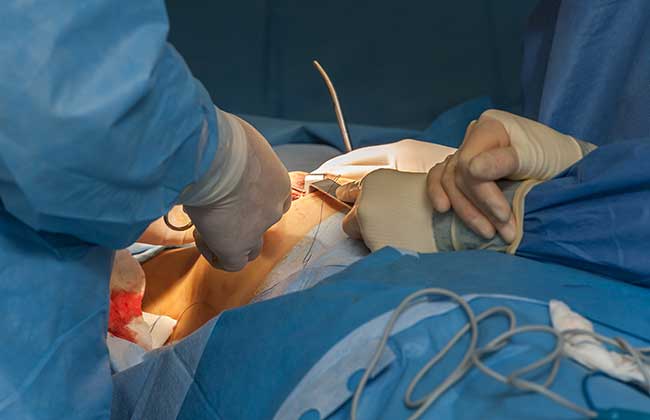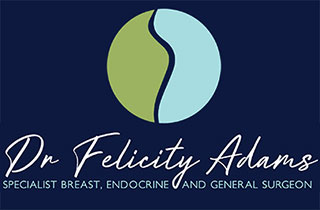Benign Breast Conditions
Dr Felicity Adams has expertise in the assessment and management of a wide range of breast conditions. Often after assessment, reassurance can be given and no surgery is required. At other times surgery is recommended to improve symptoms, or when the diagnosis is unclear.

Breast Duct Surgery
Breast duct surgery is performed to investigate and treat some types of nipple discharge. Nipple discharge is common and only sometimes a sign of something sinister such as cancer. As with all breast symptoms, it requires thorough evaluation initially by your GP and if required then by a breast surgeon such as Dr Adams. Dr Adams will ask many questions about the discharge, examine the nipple and breast and review your breast imaging.
Some patients are suitable to observe, though others require operation. Breast duct surgery includes microdochectomy and a total duct excision.
Microdochectomy
Microdochectomy is surgery of the breast ducts which aims to remove as little tissue as possible (a single duct) to find out the cause of the problem and stop the symptom. It is only suitable for discharge coming from a single milk duct.
Total Duct Excision
Also called Central Duct Excision or Hadfield’s procedure. Is reserved for patients with discharge from multiple ducts or where microdochectomy has not been successful or is not possible for some other reason. It involves removal of all the milk ducts behind the nipple.
Excisional Biopsy
An excisional biopsy is surgery where a small piece of breast tissue (or biopsy) is removed. It is used when a radiological biopsy (core biopsy) is inconclusive, or to supplement it with some problems where a larger biopsy is required. Commonly this is done for breast abnormalities picked up on mammogram or ultrasound, which cannot be felt by the patient or doctor. In these cases, a hookwire will usually be used.
The surgery is done under general anaesthetic, takes approximately one hour and is done as a day case. Most women recover quite quickly from surgery. There may be pain but usually this is not severe, and pain relief will be given to you prior to discharge from hospital. Bruising and tenderness of the breast is common.
It is impossible to perform this surgery and not affect the appearance of the breast. Scars are unavoidable with all surgery. Where possible they are placed at the edge of the areola though this depends on the location of the abnormality. Dr Adams places great emphasis on the appearance of the breast after surgery but some changes can occur.
Dr Adams will meet with you approximately one week after surgery. At this appointment a general review is undertaken and your histology or microscope report is discussed. If any further treatment is recommended it will be discussed with you.
Excision of a Benign Breast Lump
Sometimes benign (non-cancerous) breast lumps are surgically removed from the breast. The most common type of benign breast lump removed is a fibroadenoma. Whilst generally harmless, fibroadenomas can be removed when they are painful, causing other problems for the patient, or are very large. They are usually removed with minimal surrounding normal breast tissue (or margin).
Surgery is performed under general anaesthetic as a day case. Surgery will typically take an hour or less. There may be pain but usually this is not severe, and pain relief will be given to you prior to discharge from hospital. Bruising and tenderness of the breast is common.
Scars are unavoidable with all surgery. Where possible they are placed at the edge of the areola, or in the skin crease underneath the breast though this depends on the location of the lump. In most patients scars fade to a pale white line by 9-12 months, though an individual scar is very much dependant on a patient’s skin type. Dr Adams places great emphasis on the appearance of the breast after surgery but some changes can occur.

